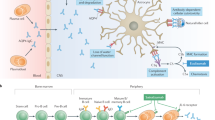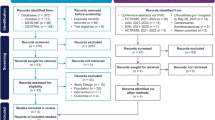Abstract
Background
Neuromyelitis optica spectrum disorder (NMOSD) is a rare, disabling autoimmune disorder of the central nervous system. Clinical trials in NMOSD present unique design and statistical challenges to adequately determine treatment effect and to minimize risk.
Methods
The N-MOmentum trial (NCT02200770) is evaluating the efficacy and safety of MEDI-551, an anti-CD 19 B-cell depleting monoclonal antibody, in patients with NMOSD and employs a number of unique design features. Patients are randomized (3:1) to receive MEDI-551 or placebo for up to 197 days. NMOSD attacks are evaluated by the investigator and confirmed by an independent adjudication committee. The primary endpoint is time to first relapse as determined by adjudication committee. Sample size re-estimation and futility analyses are planned interim analyses. Novel multiplicity adjustment methods are developed to control the study-wise type I error. Methods for assessing inter- and intrarater reliability are proposed.
Conclusions
The N-MOmentum study minimizes exposure to placebo for individual patients. The application of several statistical methods in the N-MOmentum trial is novel in NMOSD and aims to achieve a balance between minimizing risk and maintaining scientific integrity.
Similar content being viewed by others
References
Sasinowski FJ, Panico EB, Valentine JE. Quantum of effectiveness in FDA’s approval of orphan drugs: update, July 2010 to June 2014. Ther Innov Regul Sci. 2015.
Marrie RA, Gryba C. The incidence and prevalence of neuromyelitis optica: a systematic review. Int J MS Care. 2013;15:113–118.
Pandit L, Asgari N, Apiwattanakul M, et al. Demographic and clinical features of neuromyelitis optica: A review. Mult Scler. 2015;21:845–853.
Costanzi C, Matiello M, Lucchinetti CF, et al. Azathioprine: tolerability, efficacy, and predictors of benefit in neuromyelitis optica. Neurology. 2011;77:659–666.
Jacob A, Matiello M, Weinshenker BG, et al. Treatment of neuromyelitis optica with mycophenolate mofetil: retrospective analysis of 24 patients. Arch Neurol. 2009;66:1128–1133.
Bedi GS, Brown AD, Delgado SR, Usmani N, Lam BL, Sheremata WA. Impact of rituximab on relapse rate and disability in neuromyelitis optica. Mult Scler. 2011;17:1225–1230.
Jacob A, Weinshenker BG, Violich I, et al. Treatment of neuromyelitis optica with rituximab: retrospective analysis of 25 patients. Arch Neurol. 2008;65:1443–1448.
Kim SH, Kim W, Li XF, Jung IJ, Kim HJ. Repeated treatment with rituximab based on the assessment of peripheral circulating memory B cells in patients with relapsing neuromyelitis optica over 2 years. Arch Neurol. 2011;68:1412–1420.
Wingerchuk DM. Neuromyelitis optica. Int MS J. 2006;13:42–50.
Guidance for industry. Enrichment strategies for clinical trials to support approval of human drugs and biological products. Food and Drug Administration. http://www.fda.gov/downloads/drugs/guidancecomplianceregulatoryinformation/guidances/ucm332181.pdf. Accessed July 13, 2015.
Pittock SJ, Lennon VA, McKeon A, et al. Eculizumab in AQP4-IgG-positive relapsing neuromyelitis optica spectrum disorders: an open-label pilot study. Lancet Neurol. 2013;12:554–562.
Bernard-Valnet R, Liblau RS, Vukusic S, Marignier R. Neuromyelitis optica: a positive appraisal of seronegative cases. Eur J Neurol. 2015.
Saville BR, Kim YS, Koch GG. Graphical displays for clarifying how allocation ratio affects total sample size for the two sample logrank test. Pharm Stat. 2011;10:40–44.
Wittes J. Sample size calculations for randomized controlled trials. Epidemiol Rev. 2002;24:39–53.
Cree B. Mycophenolate mofetil to treat neuromyelitis optica: is it time for a randomized trial? JAMA Neurol. 2014;71:1354–1357.
Todd S, Valdes-Marquez E, West J. A practical comparison of blinded methods for sample size reviews in survival data clinical trials. Pharm Stat. 2012;11:141–148.
Li G, Shih WJ, Wang Y. Two-stage adaptive design for clinical trials with survival data. J Biopharm Stat. 2005;15:707–718.
Lan KKG, Hu P, Proschan MA. A conditional power approach to the evaluation of predictive power. Stat Biopharm Res. 2009;1:131–136.
Bretz F, Maurer W, Brannath W, Posch M. A graphical approach to sequentially rejective multiple test procedures. Stat Med. 2009;28:586–604.
Millen BA, Dmitrienko A. Chain procedures: a class of flexible closed testing procedures with clinical trial applications. Stat Biopharm Res. 2011;3:14–30.
Regulatory workshop on clinical trials designs in neuromyelitis optica and spectrum disorders (NMOSD). European Medicines Agency. http://www.ema.europa.eu/docs/en_GB/document_library/Report/2015/06/WC500188313.pdf. Accessed July 13, 2015.
Cree BAC. Placebo controlled trials in neuromyelisis optica are needed and ethical. Mult Scler Relat Disord. 2015; in press.
Wei LJ, Lin DY, Weissfeld L. Regression analysis of multivariate incomplete failure time data by modeling marginal distribution. J Am Stat Assoc. 1989;84:1065–1073.
Vangeneugden T, Molenberghs G, Laenen A, Alonso A, Geys H. Generalizability in nongaussian longitudinal clinical trial data based on generalized linear mixed models. J Biopharm Stat. 2008;18:691–712.
Carrasco JL, Phillips BR, Puig-Martinez J, King TS, Chinchilli VM. Estimation of the concordance correlation coefficient for repeated measures using SAS and R. Comput Methods Programs Biomed. 2013;109:293–304.
Uno H, Claggett B, Tian L, et al. Moving beyond the hazard ratio in quantifying the between-group difference in survival analysis. J Clin Oncol. 2014;32:2380–2385.
Author information
Authors and Affiliations
Corresponding author
Rights and permissions
About this article
Cite this article
Patra, K., Cree, B.A.C., Katz, E. et al. Statistical Considerations for an Adaptive Design for a Serious Rare Disease. Ther Innov Regul Sci 50, 375–384 (2016). https://doi.org/10.1177/2168479015619203
Received:
Accepted:
Published:
Issue Date:
DOI: https://doi.org/10.1177/2168479015619203




